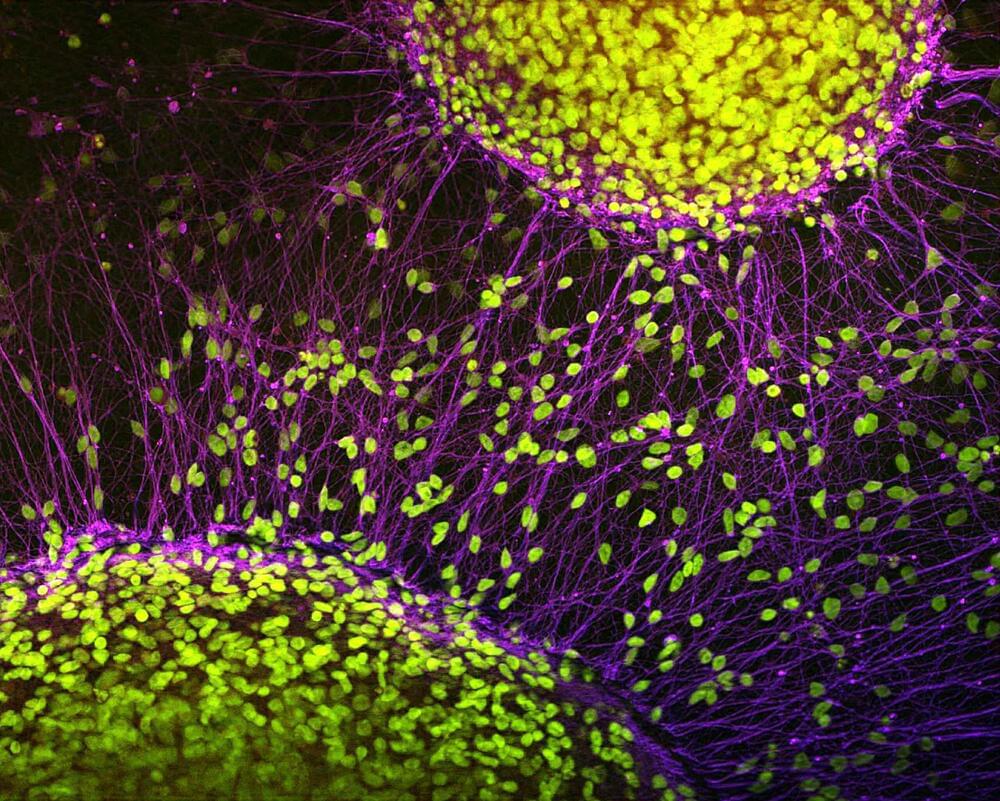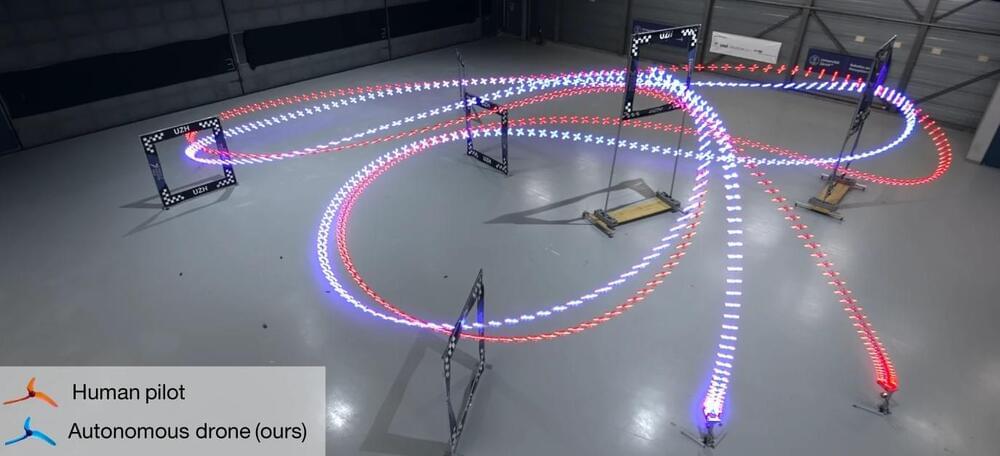A new Boston Dynamics office in Frankfurt, Germany will provide sales, services, and field engineering support for European customers.



Hospital nurseries routinely place soft bands around the tiny wrists of newborns that hold important identifying information such as name, sex, mother, and birth date. Researchers at Rockefeller University are taking the same approach with newborn brain cells—but these neonates will keep their ID tags for life, so that scientists can track how they grow and mature, as a means for better understanding the brain’s aging process.
As described in a new paper in Cell, the new method developed by Rockefeller geneticist Junyue Cao and his colleagues is called TrackerSci (pronounced “sky”). This low-cost, high-throughput approach has already revealed that while newborn cells continue to be produced through life, the kinds of cells being produced greatly vary in different ages. This groundbreaking work, led by co-first authors Ziyu Lu and Melissa Zhang from Cao’s lab, promises to influence not only the study of the brain but also broader aspects of aging and disease across the human body.
“The cell is the basic functional unit of our body, so changes to the cell essentially underlie virtually every disease and the aging process,” says Cao, head of the Laboratory of Single-Cell Genomics and Population Dynamics. “If we can systematically characterize the different cells and their dynamics using this novel technique, we may get a panoramic view of the mechanisms of many diseases and the enigma of aging.”

Early-life stress (ELS) is one of the strongest lifetime risk factors for depression, anxiety, suicide, and other psychiatric disorders, particularly after facing additional stressful events later in life. Human and animal studies demonstrate that ELS sensitizes individuals to subsequent stress. However, the neurobiological basis of such stress sensitization remains largely unexplored. We hypothesized that ELS-induced stress sensitization would be detectable at the level of neuronal ensembles, such that cells activated by ELS would be more reactive to adult stress. To test this, we leveraged transgenic mice to genetically tag, track, and manipulate experience-activated neurons. We found that in both male and female mice, ELS-activated neurons within the nucleus accumbens (NAc), and to a lesser extent the medial prefrontal cortex, were preferentially reactivated by adult stress. To test whether reactivation of ELS-activated ensembles in the NAc contributes to stress hypersensitivity, we expressed hM4Dis receptor in control or ELS-activated neurons of pups and chemogenetically inhibited their activity during experience of adult stress. Inhibition of ELS-activated NAc neurons, but not control-tagged neurons, ameliorated social avoidance behavior following chronic social defeat stress in males. These data provide evidence that ELS-induced stress hypersensitivity is encoded at the level of corticolimbic neuronal ensembles.
SIGNIFICANCE STATEMENT Early-life stress enhances sensitivity to stress later in life, yet the mechanisms of such stress sensitization are largely unknown. Here, we show that neuronal ensembles in corticolimbic brain regions remain hypersensitive to stress across the life span, and quieting these ensembles during experience of adult stress rescues stress hypersensitivity.

Apple CEO Tim Cook has told UK press that the company is “of course” working on generative AI, and that he expects to hire more Artificial intelligence staff in that country.
Just hours after Apple put a spotlight on how it supports over half a million jobs in the UK, Tim Cook has been talking about increasing that by hiring more staff working in AI.
According to London’s Evening Standard, Cook was asked by the PA news agency about AI and hiring in the UK. Cook said: “We’re hiring in that area, yes, and so I do expecting [recruitment] to increase.”

Even with all the technological advancements in recent years, autonomous systems have never been able to keep up with top-level human racing drone pilots. However, it looks like that gap has been closed with Swift – an autonomous system developed by the University of Zurich’s Robotics and Perception Group.
Previous research projects have come close, but they relied on optical motion capture settings in a tightly controlled environment. In contrast, Swift is completely independent of remote inputs and utilizes only an onboard computer, IMU, and camera for real-time for navigation and control. It does however require a pretrained machine learning model for the specific track, which maps the drone’s estimated position/velocity/orientation directly to control inputs. The details of how the system works is well explained in the video after the break.
The paper linked above contains a few more interesting details. Swift was able to win 60% of the time, and it’s lap times were significantly more consistent than those of the human pilots. While human pilots were often faster on certain sections of the course, Swift was faster overall. It picked more efficient trajectories over multiple gates, where the human pilots seemed to plan one gate in advance at most. On the other hand human pilots could recover quickly from a minor crash, where Swift did not include crash recovery.

A new study by researchers at Queen Mary University of London, Imperial College London and The University of Melbourne has found that people can learn to use supernumerary robotic arms as effectively as working with a partner in just one hour of training.
The study, published in the IEEE Open Journal of Engineering in Medicine and Biology, investigated the potential of supernumerary robotic arms to help people perform tasks that require more than two hands. The idea of human augmentation with additional artificial limbs has long been featured in science fiction, like in Doctor Octopus in The Amazing Spider-Man (1963).
“Many tasks in daily life, such as opening a door while carrying a big package, require more than two hands,” said Dr. Ekaterina Ivanova, lead author of the study from Queen Mary University of London. “Supernumerary robotic arms have been proposed as a way to allow people to do these tasks more easily, but until now, it was not clear how easy they would be to use.”

In a groundbreaking clinical trial, two patients suffering from severe heart failure experienced improvements in their symptoms through an innovative procedure. The clinical trial was conducted by Heartseed, a medical venture associated with Keio University in Tokyo’s Shinjuku Ward.
The procedure involves the transplantation of “cardiomyocyte spheroids” (CM spheroids), spherical clusters of heart muscle cells derived from induced pluripotent stem cells (iPSCs). This development represents a significant step forward in the treatment of heart failure using iPSCs, with plans for practical implementation set for around 2025.
Japanese venture Heartseed has found that treating heart failure with iPSC-derived cardiomyocyte spheroids could achieve sustained tissue regeneration.
Changes to short, repetitive sequences in the genome have been linked to diseases like autism and schizophrenia. New revelations about how such changes increase and decrease gene expression may provide insight into these and other disorders.

For many patients diagnosed with certain types of B-cell lymphoma, leukemia and multiple myeloma, chimeric antigen receptor (CAR) T cell therapy offers an effective treatment option. This cellular therapy is created by extracting a patient’s T cells, modifying them in a lab to identify and attack cancer cells, and returning them to the patient.
The process of creating the CAR T cells can take three to four weeks. Radiation therapy can be a tool to help get a patient through this manufacturing period. This is called bridging therapy.
“Bridging therapy can help control the disease so that a patient can get to the CAR T cell infusion,” says radiation oncologist Penny Fang, M.D. Research from Fang and her colleagues examines the role of bridging therapy for B-cell lymphoma patients receiving CAR T cell therapy. Their latest findings will be presented at the 2023 American Society for Radiation Oncology Annual Meeting.
